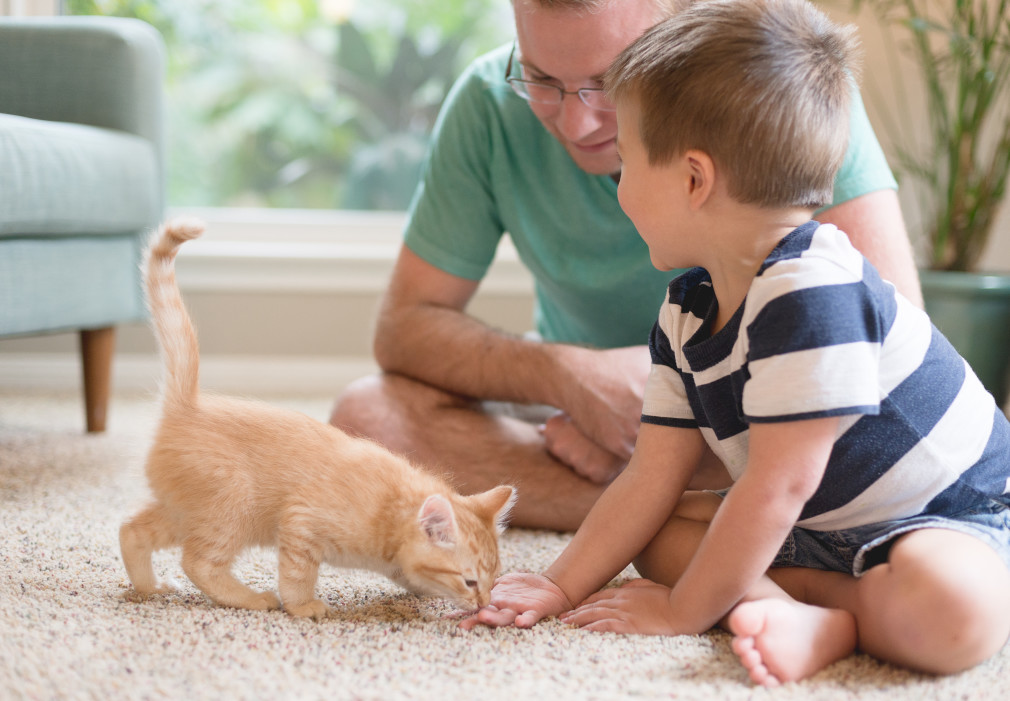The child of 2 years and 9 months

Your child is almost completely developed. Motor coordination tunes as he practices certain activities. Likewise, speech has improved a lot and everyone in the house and even outsiders can understand it. Be very careful with what is said inside the house.
Of course, there are errors in pronunciation. Keep teaching the right way, without directly demonstrating that he spoke wrong. Speak clearly to him, using complete sentences. If he doesn’t speak many words, talk to the pediatrician if you need to be concerned and pay attention to possible problems.
Just as he has mood swings and begins to learn to differentiate feelings, he also realizes when someone close to him goes through these variations. If he asks why you, dad or a friend are angry or sad, the most recommended is to explain what is happening and why, helping the child to understand.
Also don’t lie to your child. He may be a child, but he already understands more than you think. If he needs, for example, to take a bad medicine or do something he doesn’t like, like cutting his nails, talk about the reason and show why it is important to do it.
Stimuli and Games
The list of games and stimuli for children who manage to have a greater mastery of hand and foot movement and already understand certain commands is quite extensive.
There are many variations on how to play with a ball. You can challenge your child to bounce the ball with both hands and then try with just one. Then, increase the difficulty, like taking a step.
Look for age-appropriate puzzle and memory games with more pieces. Since he can already understand simple rules, schedule time for family games, besides being very fun, it teaches you to have patience to wait for his turn and to obey the order of things.
With developed speech, now it’s time to increase vocabulary. Look for children’s books with new words to tell stories. Read and show the words. You may need to explain what it means.
Although the tricycle is only recommended at the age of 3, it may be good for him to have one and become familiar with the pedals. It is only necessary to stipulate the appropriate places to use, avoiding accidents.
Taking out the pacifier and bottle
The use of a pacifier and bottle for a prolonged period can disturb the alignment of the teeth, cause sagging of the facial muscles, failure in the correct movement of the tongue during speech and favor breathing through the mouth. It is recommended to get these habits out until 2 years old, but some children are a little reluctant and extend a few more months.
Among the tips to be able to take it out for good, the first is to replace the bottle with a spouted cup, passing to the straw, and then to the normal cup. If the child shows resistance, talk about the change and make the substitutions gradually, alternating between the bottle and the glass during the day.
The pacifier can be a more difficult and divisive accessory. Some children don’t even accept it when they are babies. Others transform it into the transition object, which makes it more difficult to remove.
Tips for removing the pacifier:
– Start by entering into an agreement and saying that it will only be used at bedtime. When she falls asleep, take out the pacifier.
– Transform the pacifier into something that hinders understanding when you speak. Pretend you don’t understand, until the child takes it off.
– Create a reward when she takes the pacifier, preferably without being sweet, or plan a small party when it happens.
Food and Sleep
Did you know that there are certain foods that impair sleep? Soft drinks, sweets, fatty or stimulating foods, can make the child more agitated or uncomfortable, impairing the sleep routine.
To make bedtime more peaceful, have a feeding table, with the appropriate food for each time. Before bedtime, a simpler snack is recommended, such as a glass of warm milk, perhaps. Remember to brush your teeth after that.
